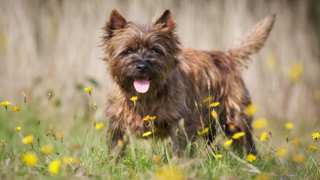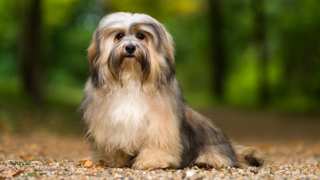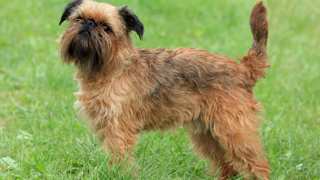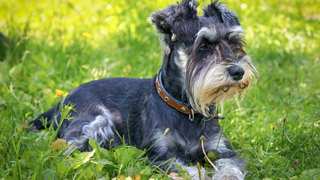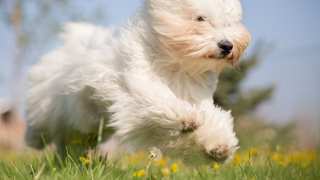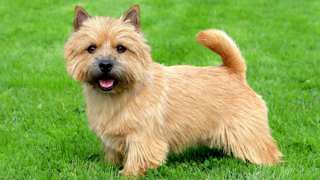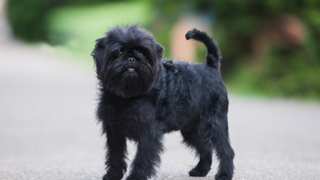These dogs have wiry, shaggy, medium-length coats that, while shedding little, need to be stripped several times per year--so overall, Norfolk Terrier grooming requires moderate work. They'll need to be brushed a couple of times per week to keep the coats from getting out of control; baths are only required when necessary; and they'll need to be fully stripped twice per year (around the time they "blow" their summer and winter coats), along with some "maintenance" stripping every 2-3 months.
Use a slicker brush or a metal comb to brush these dogs. First wet the coat with mist from a spray bottle, then starting at the shoulders, use the typical line brushing technique, moving in the direction of hair growth. It's a good idea when brushing to also trim excess hair around the eyes and anus if needed, to help the dog see better and to avoid the hair around the anus from getting soiled when the dog defecates.
Norfolk Terriers shouldn't be bathed too frequently, as doing so rids the coat of its natural water-resistant oils--so only bathe your Norfolk if it becomes especially dirty or stinky. To bathe: these dogs are small enough to be bathed in the kitchen sink. First give the coat a thorough brushing, then wet the coat completely. Be sure to use canine shampoo, as the kind made for humans can irritate the dog's skin. Apply a quarter-sized amount of shampoo to the dog's back, then lather well, working downward as you go. (And don't forget the legs and underbelly!) Use a washcloth to clean the head, ears, and face; rinse completely, towel-dry, then give the coat another quick brush-through to make it look healthy and clean.
Norfolks can be stripped either at home or by a professional groomer. (For detailed instructions, see the Plucking & Stripping section of this page.) Owners are encouraged to learn how to strip their Norfolks themselves, but at least one trip to the groomer is recommended; the groomer can demonstrate the proper stripping method, and provide tips on how to groom a Norfolk Terrier in general.

